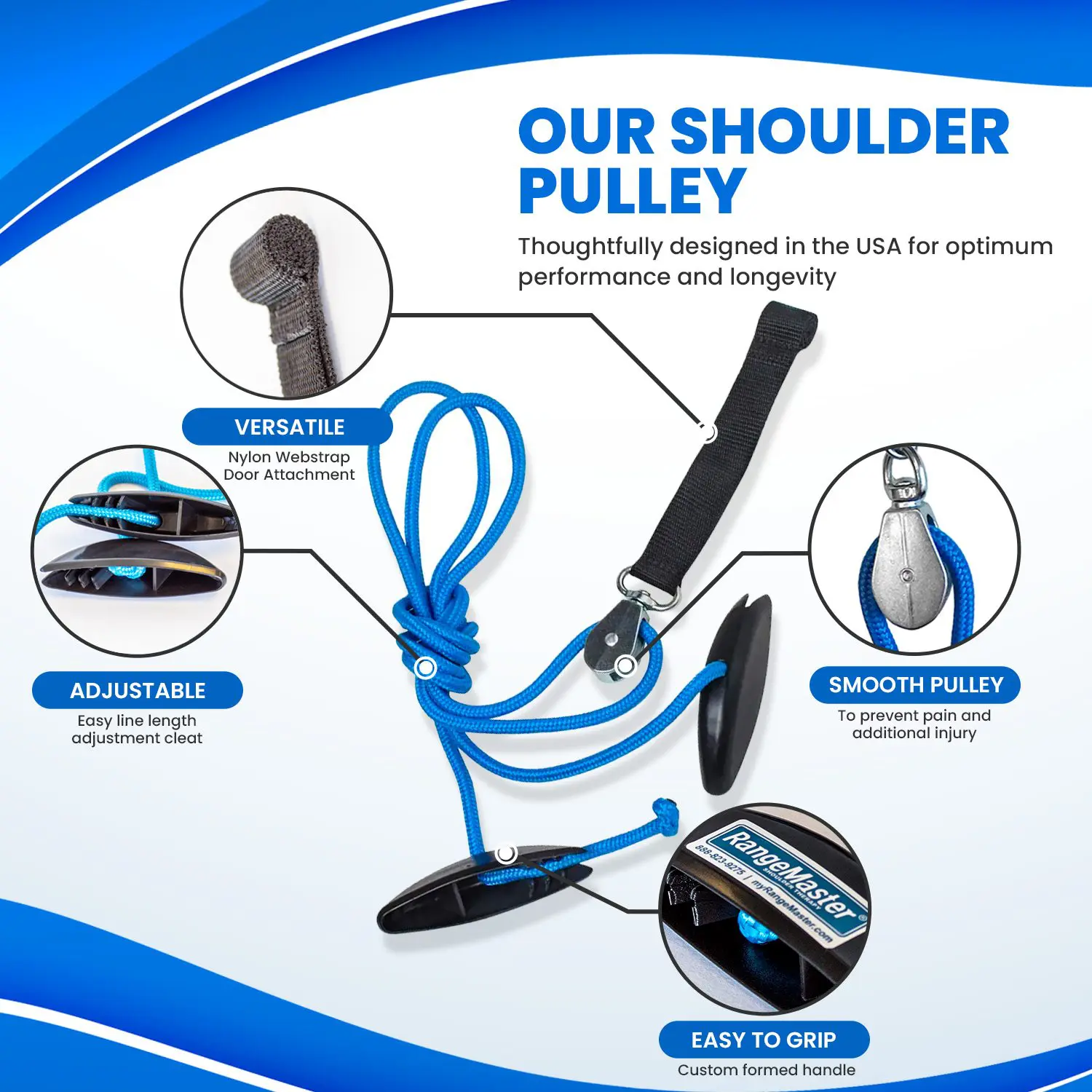Best Shoulder Pulleys for Frozen Shoulder for 2022
This article has been updated on 02/17/2023 by author – Anthony Maritato, PT
Are Shoulder Pulley Exercises Good for Frozen Shoulder (Adhesive Capsulitis)?
Yes, shoulder pulley exercises are a great way to unfreeze a frozen shoulder. A licensed physical therapist will prescribe a specific home exercise program using an over-the-door pulley system for home physical therapy. Rehabilitating a frozen shoulder may take between 6 weeks and 18 months depending on the severity and cause of the symptoms.
Why Are Shoulder Pulleys So Great for Frozen Shoulder Rehab and Home Physical Therapy?
Over the door shoulder pulleys are great because they are inexpensive, easy to use, allow the patient to perform passive range of motion, active assisted range of motion, and even resistance training without any extra weights or equipment.
Are Shoulder Pulley Systems Dangerous?
Over-the-door shoulder pulleys can be safe when used correctly, but like any rehabilitation device, there is some risk of injury if they are used improperly.
Improper use of over-the-door shoulder pulleys can potentially lead to shoulder or upper back injuries. For example, if the pulley is not securely fastened to the door or if the individual is pulling with excessive force, it can cause the pulley to dislodge and the individual to fall or suffer other injuries. Additionally, if the individual does not use proper form while performing exercises with the pulley, it could cause undue strain on the shoulder joint or surrounding muscles.
It is important to use over-the-door shoulder pulleys under the guidance of a physical therapist who can assess your condition, instruct you on proper use and technique, and monitor your progress. They can also identify any potential risks or complications and make appropriate modifications to your treatment plan.
Overall, when used properly and with proper guidance, over-the-door shoulder pulleys can be an effective tool for shoulder rehabilitation.
Best Overall Pick – Shoulder Pulley in 2023
* Rangemaster Blue Ranger Shoulder Pulley
RangeMaster has been the undisputed leader in the shoulder pulley market for longer than I have been a physical therapist.
The high quality construction is what gives RangeMaster the advantage over discounted pulley systems. The Blue Ranger Shoulder Pulley will last several years in my clinic despite heavy daily use. Spending a couple of extra dollars is well worth the investment when you think about what is at risk.
More Resource links:
Avoid Cheap Shoulder Pulley Systems
Cheap shoulder pulleys are cheap for a reason. They are made with inferior-quality materials. You can see from the image below that the plastic fastener broke on this pulley system and the user tied the two ends together with a string.
If I were a patient rehabilitating my rotator cuff repair or trying to stretch a frozen shoulder I would not want the success of my rehabilitation to depend on a piece of string.
These less expensive pulley systems are not saving you that much money. A typical high-quality pulley might cost close to $20 and will last a lifetime whereas a cheaper pulley might cost $10 and break during moderate use.
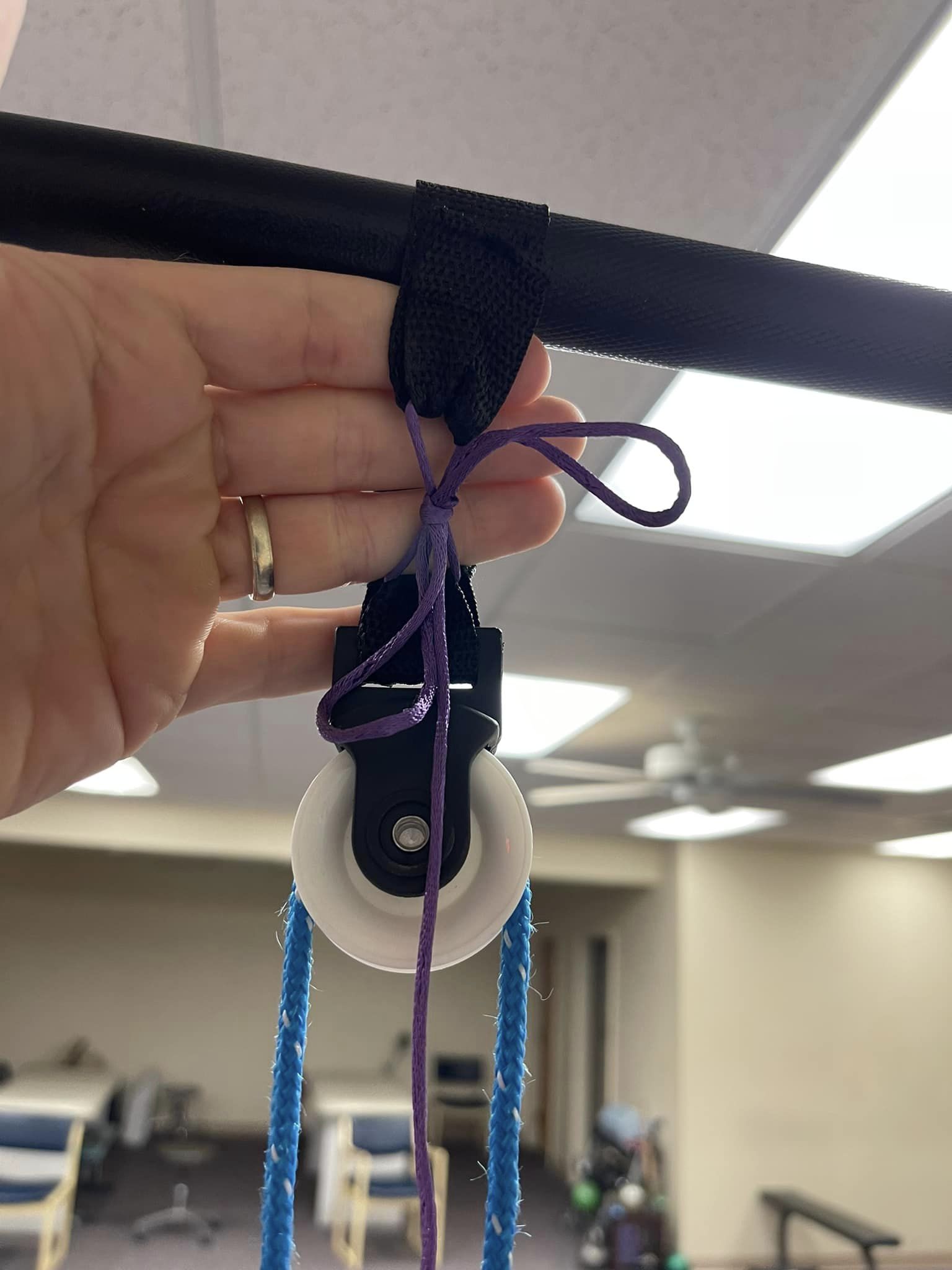
What is Frozen Shoulder (Adhesive Capsulitis)
Frozen shoulder, also known as adhesive capsulitis, is a condition in which the shoulder joint becomes stiff and painful, making it difficult to move the arm. The exact cause of frozen shoulder is not well understood, but it is thought to be related to inflammation and thickening of the capsule that surrounds the shoulder joint.
The condition typically progresses through three stages:
- Freezing Stage: The shoulder becomes increasingly stiff and painful over time, and range of motion becomes limited. This stage can last for several months.
- Frozen Stage: The shoulder remains stiff, but the pain may subside. This stage can last from several months to a year.
- Thawing Stage: The shoulder gradually regains range of motion and returns to normal. This stage can last several months to a year.
Risk factors for developing frozen shoulder include diabetes, previous shoulder injury or surgery, and prolonged immobilization of the shoulder joint, among others. Treatment for frozen shoulder typically involves a combination of stretching exercises, manual therapy, and sometimes medication. In some cases, surgery may be necessary to loosen the tight capsule around the shoulder joint.
More Articles
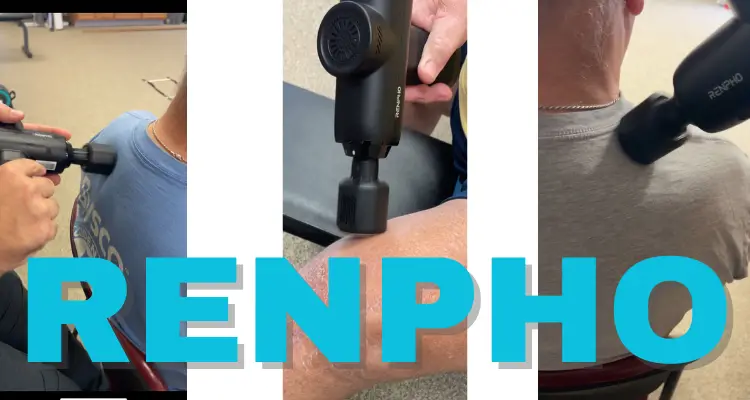
RENPHO Active Thermacool 2 Massage Gun with Heat and Cold Therapy

Managing Pain After Total Knee Replacement
Introduction to Managing Pain After a Knee Replacement Undergoing a total knee replacement is a significant medical procedure that can dramatically improve your quality of life. However, the journey to full recovery involves navigating through various challenges, one...

Total Knee Replacement Pain at Night
What to Expect Explore our comprehensive guide on managing 'Total Knee Replacement Pain at Night.' Learn about the causes of night pain, effective pain management strategies, best sleeping positions, and more. This article provides practical advice to help individuals...

Overview of Spinal Stenosis
Table of Contents What is spinal stenosis What are the symptoms of spinal stenosis How is spinal stenosis diagnosed What are the different types of treatment for spinal stenosis Where to find more information 1. What is spinal stenosis Spinal stenosis is a condition...

Spinal Stenosis Exercises to Avoid: During Knee Replacement Recovery
Spinal stenosis is relatively common among adults having a total knee replacement surgery. While spinal stenosis doesn't always impact total knee replacement recovery, when it does, it can be frustrating. Before I specialized in treating patients after a total knee...
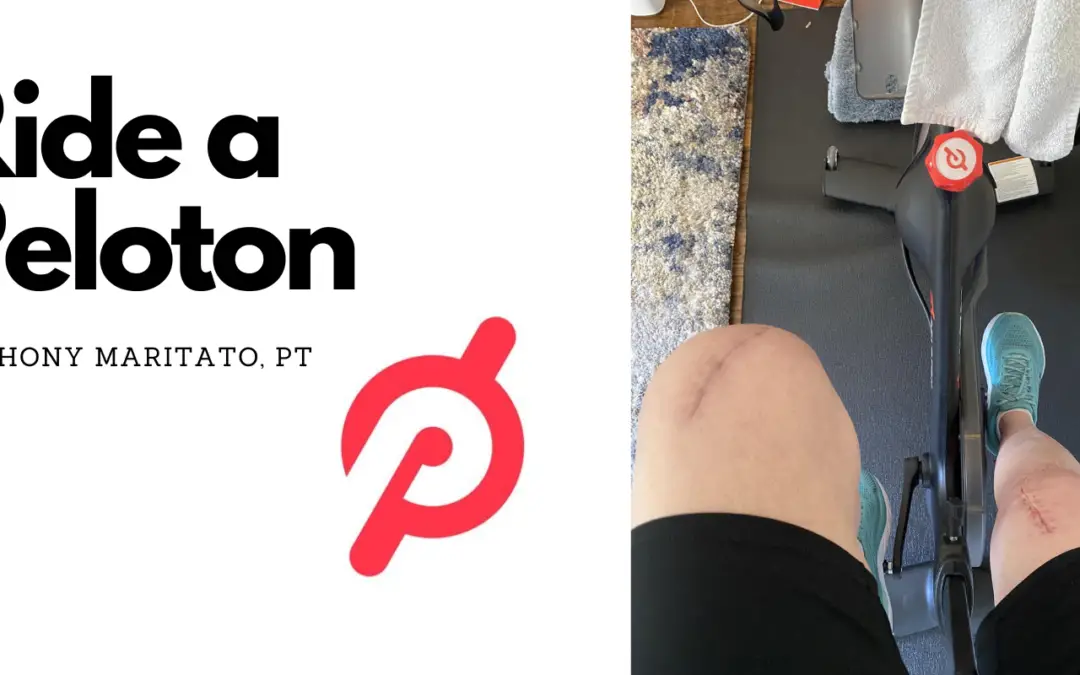
Ride a Peloton After Knee Replacement Surgery
Table of Contents When can I return to riding my Peloton bike at home after a total knee replacement? Is a Peloton bike good physical therapy after a total knee replacement surgery? Will riding my Peloton too much wear out my new knee? How often should I ride my...
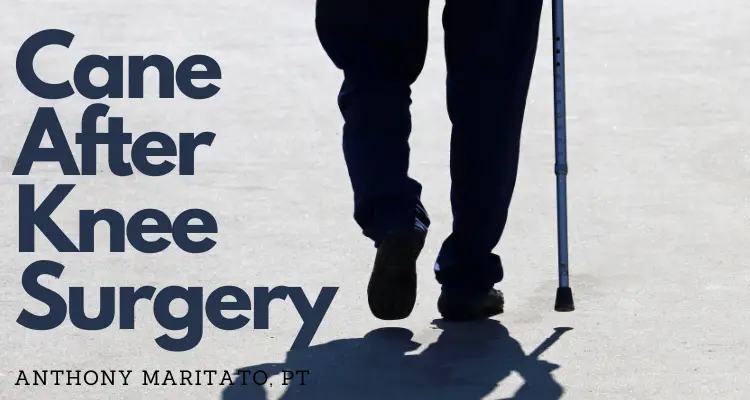
How to Use a Cane After Knee Surgery
Table of Contents Understanding the Purpose of Using a Cane after Knee Surgery How to Properly Use a Cane after Knee Surgery Common Mistakes to Avoid When Using a Cane Transitioning from a Walker to a Cane: When and How? Understanding the Purpose of Using a Cane after...
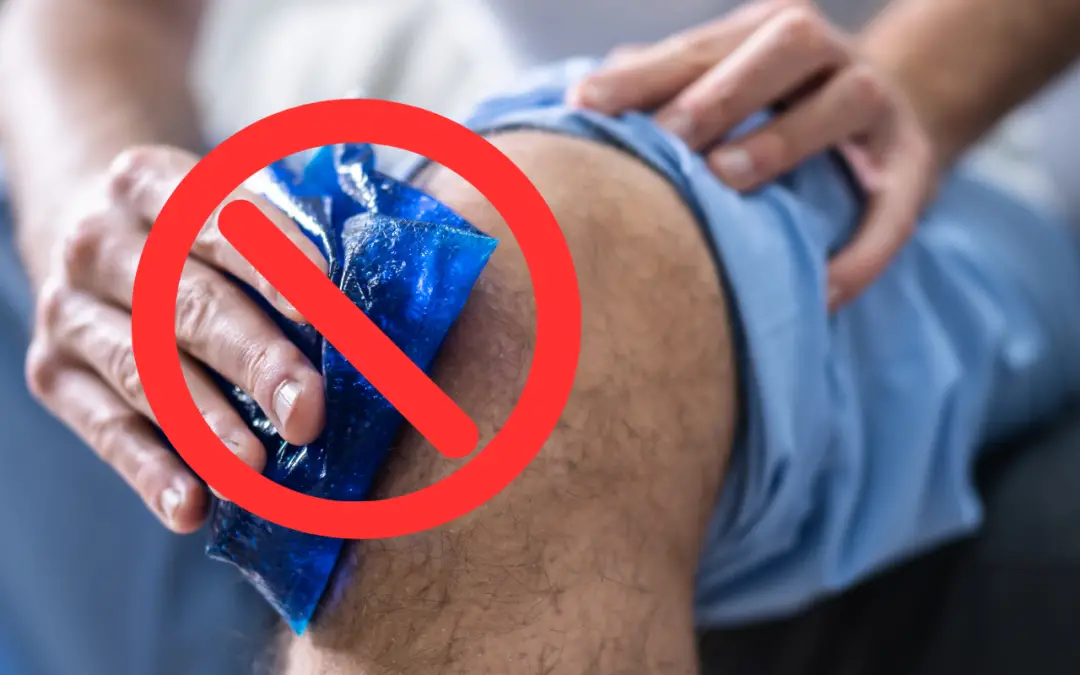
Ice Machine for Knee Surgery
Table of Contents Benefits of Using an Ice Machine After Knee Surgery How an Ice Machine Works Top Ice Machines for Knee Surgery Recovery How to Use an Ice Machine After Knee Surgery Where to Buy an Ice Machine and What to Consider Benefits of Using an Ice Machine...
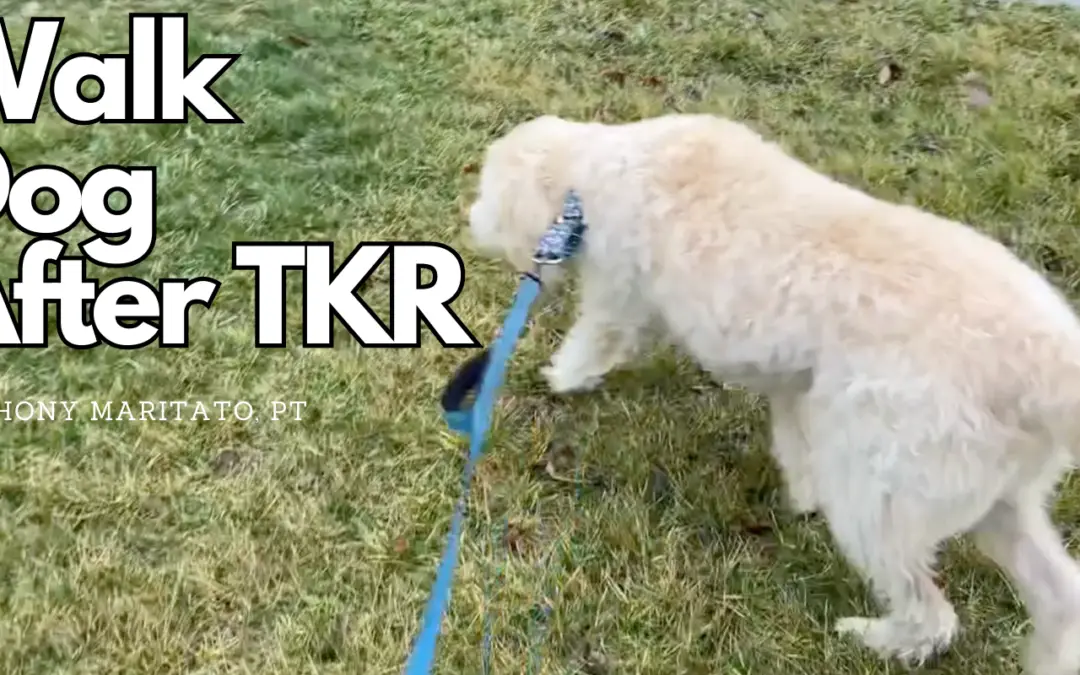
Walking Your Dog After Knee Replacement Surgery: A Timeline for Recovery
Table of Contents Introduction Walking Your Dog After Knee Replacement Safety Considerations and Precautions Conclusion Introduction Hello, fellow dog lovers and knee replacement warriors! I'm Anthony Maritato, a licensed physical therapist specializing in post-total...
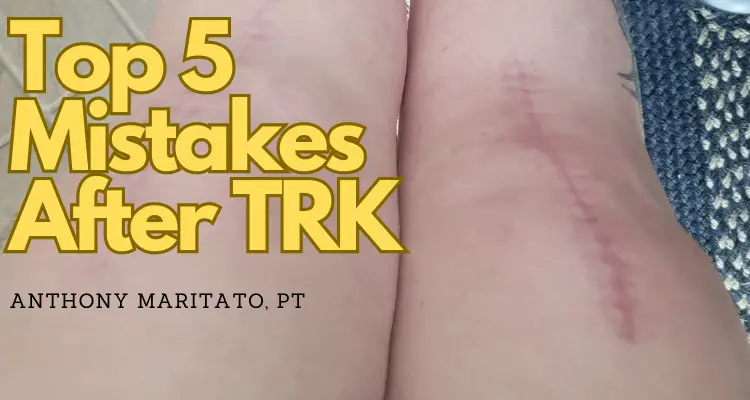
Top 5 Mistakes After Knee Replacement
In this article I will share my experience as a physical therapist and personal trainer of more than 22 years treating patients after total knee replacement surgery. I have seen patients who made every mistake possible and still had a great outcome following this...
